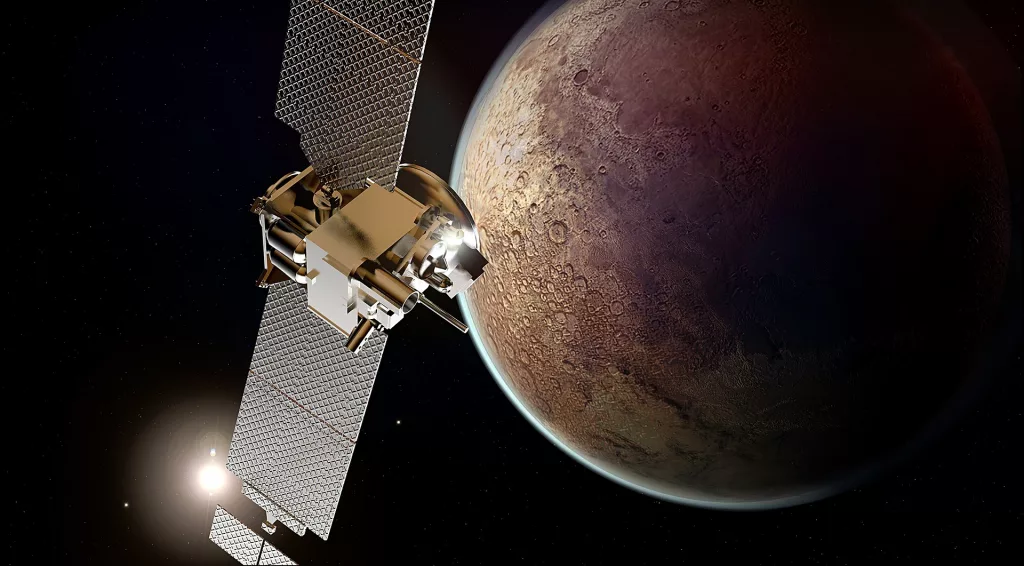Satellite connectivity and quantum computing are increasingly important in the communications service provider (CSP) space. Business technology journalist Antony Savvas looks at the evolving technologies.
Satellite
Satellite communication services were previously limited to a niche market of users with specialised handsets, but they are now becoming available to more people, bringing connectivity to remote locations with limited traditional network coverage. And the seamless integration of satellite and terrestrial networks represents a major step forward in the accessibility of satellite connectivity.

It is forecast that 92 million phones will have built-in satellite messaging functionality by the end of 2023, a massive rise from just under 2 million devices in 2021, according to figures from CCS Insight. As many as 15% of global mobile subscribers are expected to own a smartphone that supports satellite messaging by 2027.
By capitalising on revenue streams generated through operators and supplementary services, the direct-to-device satellite market is poised to amass $18 billion (€16.4 billion) in revenue by 2027.
This remarkable shift in satellite accessibility is currently being driven by Apple’s tie-in with Globalstar for the Emergency SOS feature in the iPhone 14 range, as well as Qualcomm‘s partnership with Iridium, which is bringing similar capabilities to Android phones.

“Bringing satellite capabilities to mass-market smartphones marks a milestone in the telecom industry”, says Luke Pearce, senior analyst at CCS Insight. “This development creates exciting opportunities for consumers, manufacturers and operators and promises to help bridge the digital divide.”
The integration of satellite connectivity on mobile devices will soon no longer be reliant on hardware modifications either. With commercial services expected to launch later in 2023, new low earth orbit (LEO) satellite constellations, led by AST SpaceMobile, Lynk and SpaceX, will work alongside terrestrial mobile networks to provide satellite connectivity to all unmodified phones.
While basic messaging functions will be the beginning of this burgeoning market, capabilities are expected to grow to deliver voice and much wider data services as the constellations evolve.
Importantly, network operators will be able to offer these satellite services as add-ons to existing subscription packages, catering to the growing demand for ubiquitous connectivity.
Quantum

Citizens are asked to trust technology to keep their data safe. Emails, messaging apps, online banking, internet shopping, and secure links for governments and large businesses all rely on public key cryptography to establish secure communication channels and protect sensitive data.
The security of these public key methods relies on the difficulty of solving certain mathematical problems. However, the emergence of quantum computers, able to undertake far more complex processing tasks than a traditional computer, poses a risk. This step change in processing power has the potential to crack today’s codes, decimating the trust and security on which current technology is built.
Now, Vodafone is working with technology partners and industry body the GSMA to tackle the threat head-on. Together, they are developing “quantum-safe” defences to help protect customers, governments, and society at large from the threat.
“On one hand, quantum computing has the potential to rapidly solve ultra-complex problems in key areas such as healthcare, but on the other it could undermine today’s cryptography,” says Emma Smith, Vodafone’s cyber security director. “We are trialling new algorithms to provide protection for our customers against potential quantum-empowered attackers.”

Among a raft of initiatives, Vodafone has joined forces with SandboxAQ (a spin-off from Google owner Alphabet) to conduct a proof-of-concept test for a quantum-safe virtual private network (VPN), the type of network used by millions of workers to securely access company systems via their devices.
The test was conducted using standard smartphones connected to the VPN, and which had been specifically adapted by Vodafone/SandboxAQ using cryptography algorithms from the National Institute of Standards and Technology (NIST). NIST is part of the US Department of Commerce, and it has developed a framework of standards for national and corporate cyber security practices.
Adapting a standard smartphone for the test allowed Vodafone/SandboxAQ to evaluate the latest NIST standards in a “real-life” telecoms scenario, say the partners.

Vodafone is also developing post-quantum cryptography (PQC) in partnership with the GSMA. These algorithms leverage new mathematics and methods to offer quantum safety and are the subject of ongoing standardisation processes.
Vodafone has a role in the GSMA’s newly established Post-Quantum Telco Network (PQTN) task force, to help develop industry-wide strategies and planning to address future quantum threats.
It’s good that the industry is looking ahead to tackle future threats, instead of sitting back and waiting to fire-fight them, when it may well be too late.
Edge
To increase data efficiency and cut costs, more organisations are moving data workloads from the cloud to the edge. According to analyst house Gartner, more than 15 billion IoT devices will connect to enterprise infrastructure at the edge by 2029. And 69% of firms have already made edge deployments, or plan them, by mid-2025.

With the edge, resources can be deployed wherever it makes the most business sense. The “near edge” is typically fully on-premise and therefore closest to the customer, and the “far edge” is closer to centralised data centres.
“Right now, the near edge is where the most innovation is taking place,” says Chris Gehlen, CEO of Neutroon, a provider of 5G/edge services. “There are three overarching reasons customers are choosing edge and will continue to do so.”
First up, says Gehlen, there are the data privacy and cyber security benefits. When deploying an advanced mission-critical application, for instance AI-quality inspection using real-time UHD video, enterprises don’t want to risk critical image/video data flowing outside of their organisations. Plus, with low latency an essential part of the process, there is no other option than edge computing.
The second benefit of edge computing is the simplicity it provides to test new use cases and boost innovation. Edge computing coupled with a private 5G/LTE network can provide an overlay network to boost experimentation.
Simplified networking and the reduction of bottlenecks can radically unlock the roll-out of new applications, without the network configuration hassle from each new use case. “The key to further developing the potential of edge computing lies in unifying the 5G and edge/cloud world to simplify application deployment,” says Gehlen.

Finally, there are the benefits of cost and carbon footprint reduction. Moving data to a centralised location is similar to commuting downtown every day. It generates traffic jams and pollution, and the same is happening with cloud use.
Gehlen says: “By 2025, the main driver of edge computing will be bandwidth cost, compared to latency in 2021. This is due to the soaring amounts of data being transferred to the cloud via metaverse and AI applications.”
If as little as 25% of all data centres worldwide were replaced with edge nodes, a “very conservative estimate”, says Gehlen, the world could save an estimated $13 billion (€11.85 billion) in energy costs annually, he says.
The author is Antony Savvas, a global freelance business technology journalist.
Comment on this article below or via Twitter: @VanillaPlus OR @jcvplus






